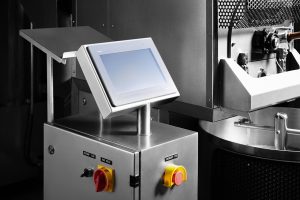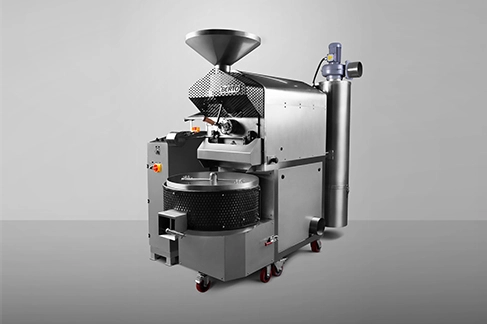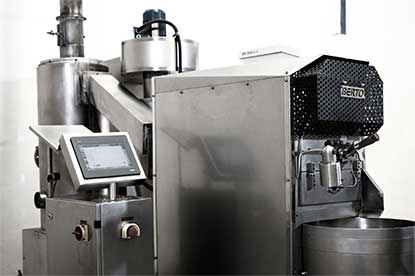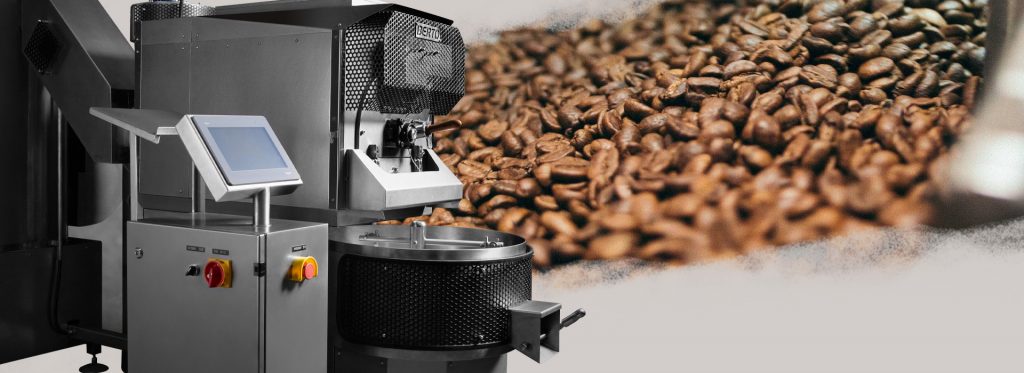Understanding Heat Transfer Inside The Coffee Roaster Machine
A coffee roaster always strives to achieve better control of the roasting process. Since coffee roasting is ultimately the transfer of heat over time, it is important for coffee roasters to have a better understanding of heat transfers inside a coffee roaster and how to manipulate it to achieve their desired outcomes. By mastering the science behind heat transfers, roasters can work more efficiently, consistently, and yield better-roasted beans.
Understanding heat transfer inside a coffee roaster machine
There are three main forms of heat transfer that take place during coffee roasting:
- Conduction is the process by which heat energy is transferred between solid objects in thermal contacts. Most coffee roaster machines have three sources of conducted heat: the drum, the faceplate, and the coffee beans.
- Convection is the process by which heat is transferred by the movement of heated fluid, such as air or water. When roasting coffee, the hot air is transferring the heat into the coffee beans. This heat transfer is achieved with the aid of a fan, making it quicker and more efficient.
- Radiation is the transfer of heat by means of electromagnetic waves that occurs naturally between two bodies with different temperatures. In the coffee roasting process, radiation is the most complex type of radiation to understand and control, as it is also affected by other factors such as temperature, density, surface area, materials, etc.
Making the modern coffee roaster
Today, modern roaster machines have a wide range of features to create the desired roast profiles and repeat them accurately and consistently. A lot of coffee roasting machine manufacturers are taking into account the reduction in energy consumption and remission, as well as the increase in efficiency and productivity, bringing innovation and design of roasting equipment to new heights. This means that the materials used and the quality of the build of a roasting machine of a specific size will also be adjusted to achieve the targeted energy output and the required burner capacity.

When selecting materials for coffee roasting machines, it is crucial to opt for thermal generation and stability. Contemporary roaster designs are leaning towards more responsive as well as economical materials such as copper, aluminum, and stainless steel, as these materials offer better control to switch heating and cooling on and off on demand. Controls are improved from basic, manual gauges into technical and programmable panels. Drum types range from insulated or uninsulated, single or double-wall, carbon, casted steel or stainless steel. The heat source also ranges from simple atmospheric gas burners to electric burners. Berto roaster machines use stainless steel, a sophisticated control panel with automated profile replication mode, variable drum speed, and variable airflow. Combined, all of these features will guarantee every roaster to have the best experience roasting coffee with Berto roaster machine.
Below are the most common types of roaster machine designs:
- Direct-flame drum roaster: the most common system, coffee beans are roasted in a drum that rotates over a horizontal axis and paddles move the beans around inside the drum. Hot air from underneath the drum is drawn in by a fan. The heat transfer is by conduction and convection. Our Berto Essentials, Berto One, and Berto D series machines fall under this roaster type.
- Indirect hot-air roaster: similar to the classic drum roaster, except that the hot air is generated in a separate chamber away from the drum and then sucked in by a fan. Most of the heat transfer is by convection. Check out our R Roaster machines that fall under this type.
- Recirculating hot-air roasters: this is a closed system in which hot recirculated exhaust air is blown through the drum. Heat transfer happens 100% by air convection, and this system saves energy and is low on emissions.
- Fluid-bed roaster: this system uses a column of air to both float and heat beans, keeping the beans moving to avoid scorching on any hot surfaces. Heated air is applied evenly, and heat transfer takes place by convection and some radiation.
- Tangential roaster: This machine is built specifically for roasting large amounts of coffee beans, using a stationary roasting chamber or drum. The flow of hot incoming air transmits the heat into the beans through convection.
- Centrifugal roaster: Also for roasting a large number of coffee beans, this model is a rotating roaster bowl that creates a centrifugal force of hot air, which is guided into the roaster through the center of the bowl, moving the beans upward in the dish and positioning them into the main air-convection stream.

Along with the great leap in the effort to achieve consistency and high quality of coffee everywhere in the world, the manufacturers of coffee roasting machines need to accommodate a vast range of requests for the working features of their machines. That is why Berto roaster machines are built only with the best materials and equipped with the best features to make roasting a smooth process for coffee roasters. In addition, coffee roasters need a better understanding of how the heat transfer works in various roaster machines, particularly the ones they are currently using, and how to utilize this heat transfer process to achieve their targeted roast profile.




